What is Shumai?
Shumai (焼売 or シューマイ) is the Japanese version of Chinese shāomai or siu mai, a type of steamed dumpling (dim sum) made with ground pork mixed with seasonings and vegetables wrapped in a thin flour dough.
While it might not be as popular as Japanese gyoza or nikuman (steamed meat buns), it is still one of Japan’s most well-known dumpling dishes due to the popularity of shumai bento boxes and pre-made supermarket products.
Shumai is often served with karashi (Japanese mustard) and dipped in soy sauce. In Japan, Yokohama is known as the center of shumai.


How I Developed This Recipe
Perfecting this shumai recipe involved numerous trials and errors. Despite many attempts, achieving the envisioned taste proved challenging.
However, after repeated adjustments in the type and quantity of meat and experimenting with various condiments, I finally succeeded in capturing the authentic shumai flavor I was aiming for.
If you have a steamer, this recipe offers the opportunity to enjoy restaurant-quality shumai right at home.
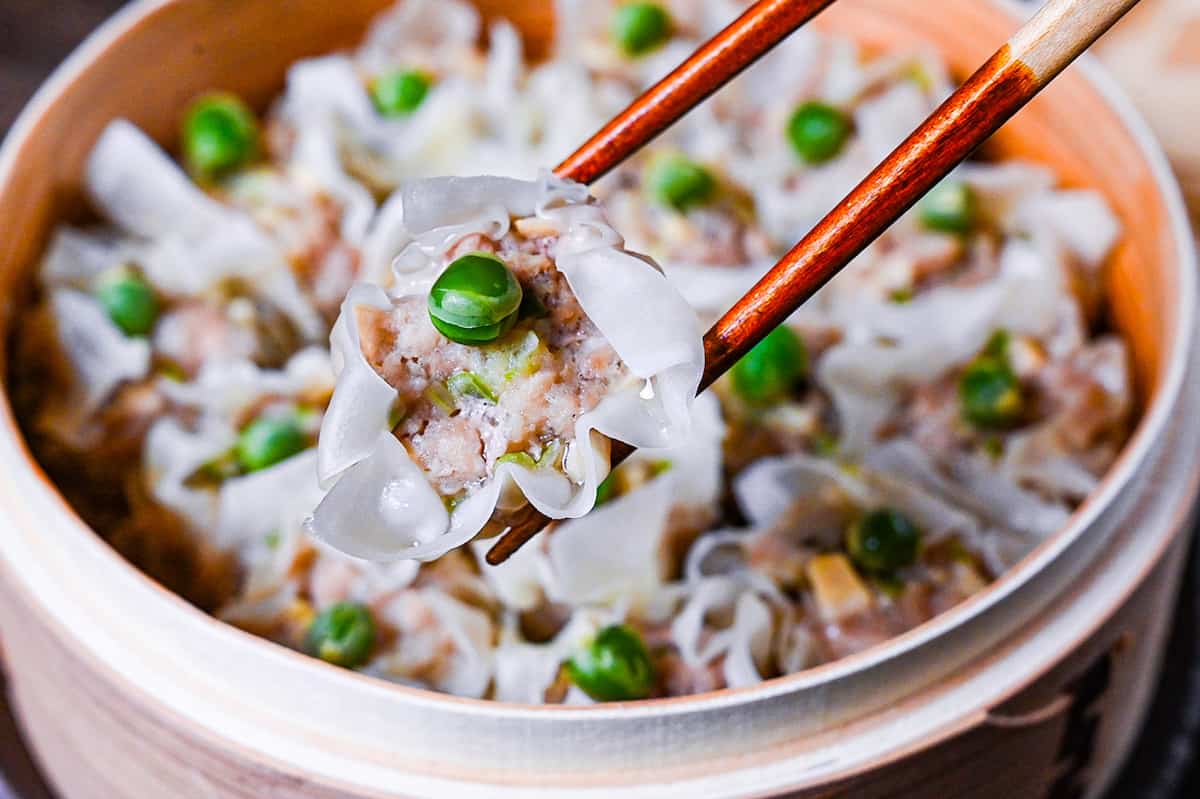
Ingredients & Substitution Ideas
- Square Shumai/Wonton Wrappers – Shumai requires thin, square wrappers like those used for wontons. Gyoza wrappers are too thick and round-shaped.
- Pork Filling – A blend of finely chopped pork belly and ground pork provides the best texture. Pork mince alone works too.
- Seasonings – Flavor the filling with soy sauce, oyster sauce, sesame oil, sake, sugar, salt, and pepper.
- Mix-Ins – Consider chopped green onion, diced bamboo shoots, potato starch, grated onion, grated ginger, and green peas.
- Dipping Sauce – Offer soy sauce and Japanese mustard (karashi) for dipping.
Curious about the exact brands and products that bring my recipes to life? Discover the brands and ingredients behind my recipes at the Sudachi Amazon Storefront. Explore my handpicked pantry essentials and find your next kitchen favorites!
Jump to Full Recipe Measurements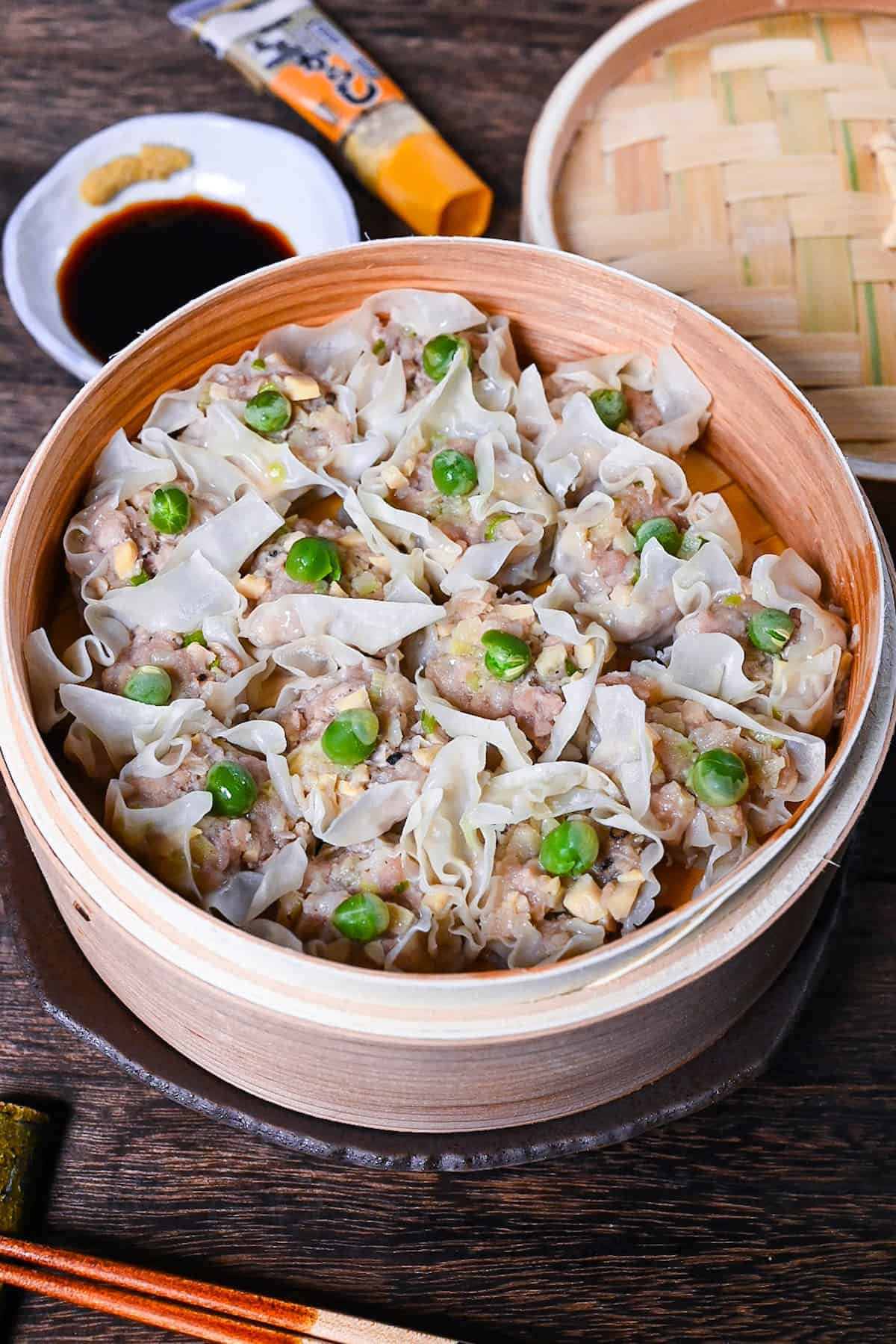
Visual Walkthrough & Tips
Here are my step-by-step instructions for how to make Pork Shumai at home. For ingredient quantities and simplified instructions, scroll down for the Printable Recipe Card below.
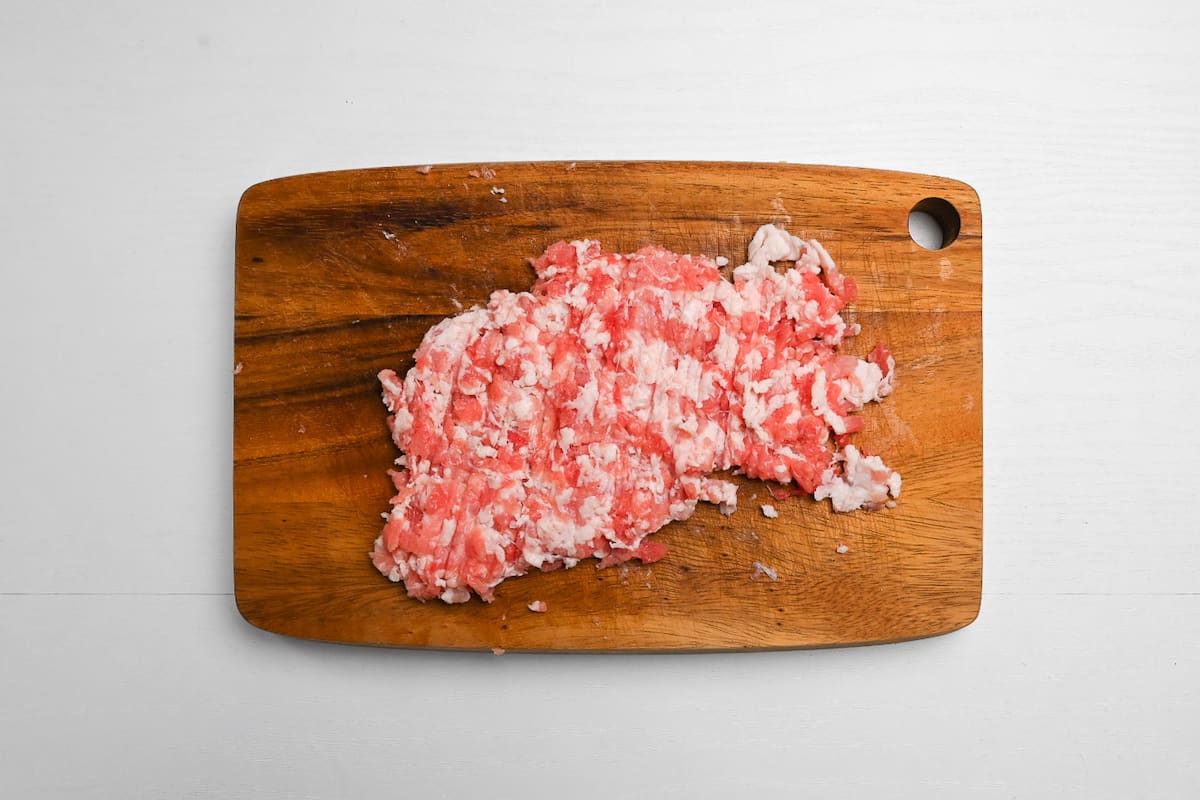
Start by finely dicing some thin slices of pork belly with a knife. The reason I use a knife is so that the shumai filling has a bit of a chunky texture. Using a food processor or mincer for this will defeat the purpose; a sharp knife will do nicely!
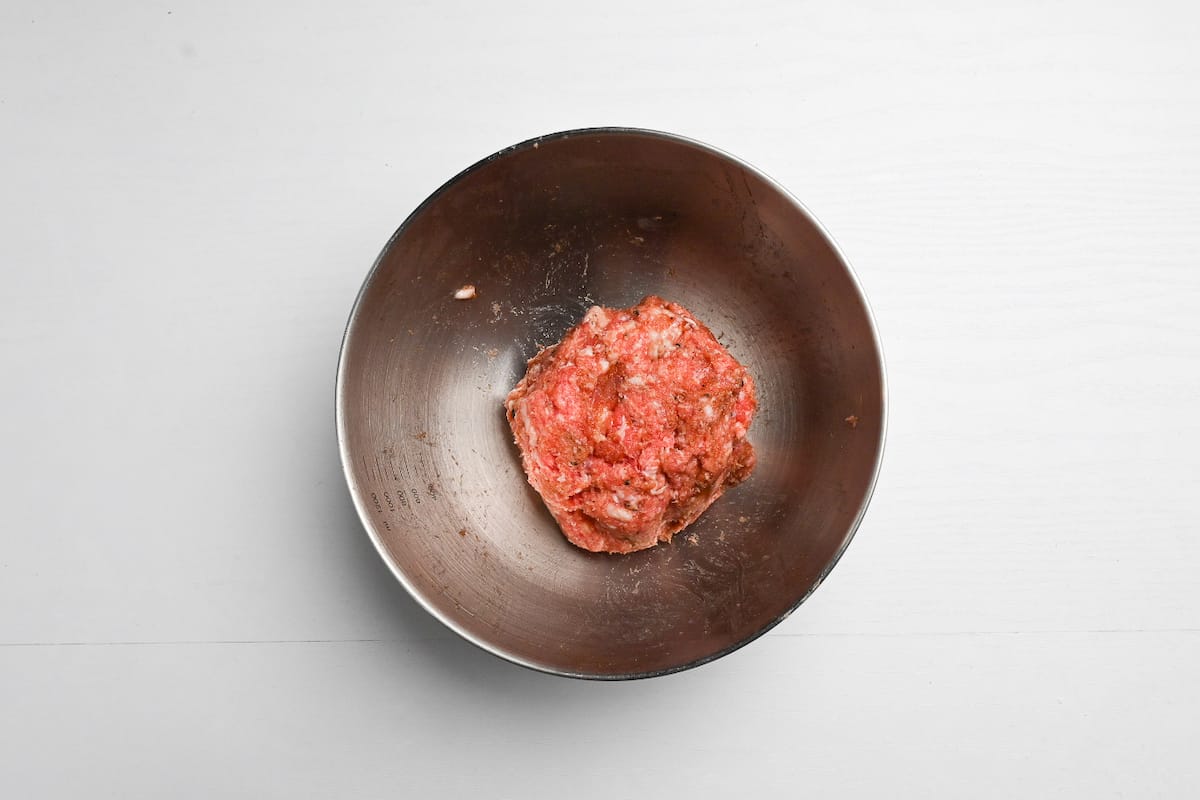
Place the pork mince and finely diced pork belly into a mixing bowl along with soy sauce, sake, oyster sauce, salt, sugar, pepper, and sesame oil. Lightly knead them together by hand.
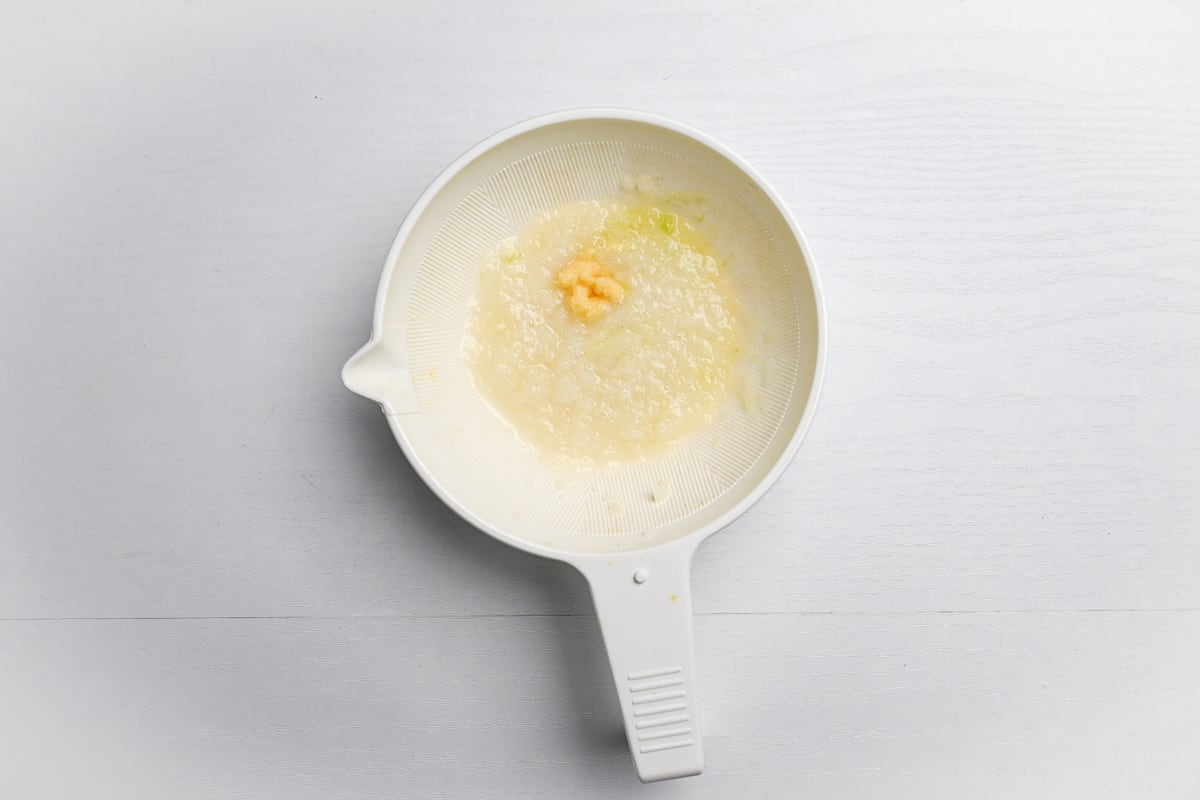
Grating the onion and ginger not only helps it distribute more evenly through the filling, but it also makes it extra juicy!

Add the finely chopped spring onion and bamboo shoots to a separate bowl with some potato starch and mix them together until evenly coated.
Not only does the potato starch help absorb the excess moisture from the vegetables, but it will also act as a binder when we combine it with the meat, helping make a more stable filling that will hold its shape when steamed.
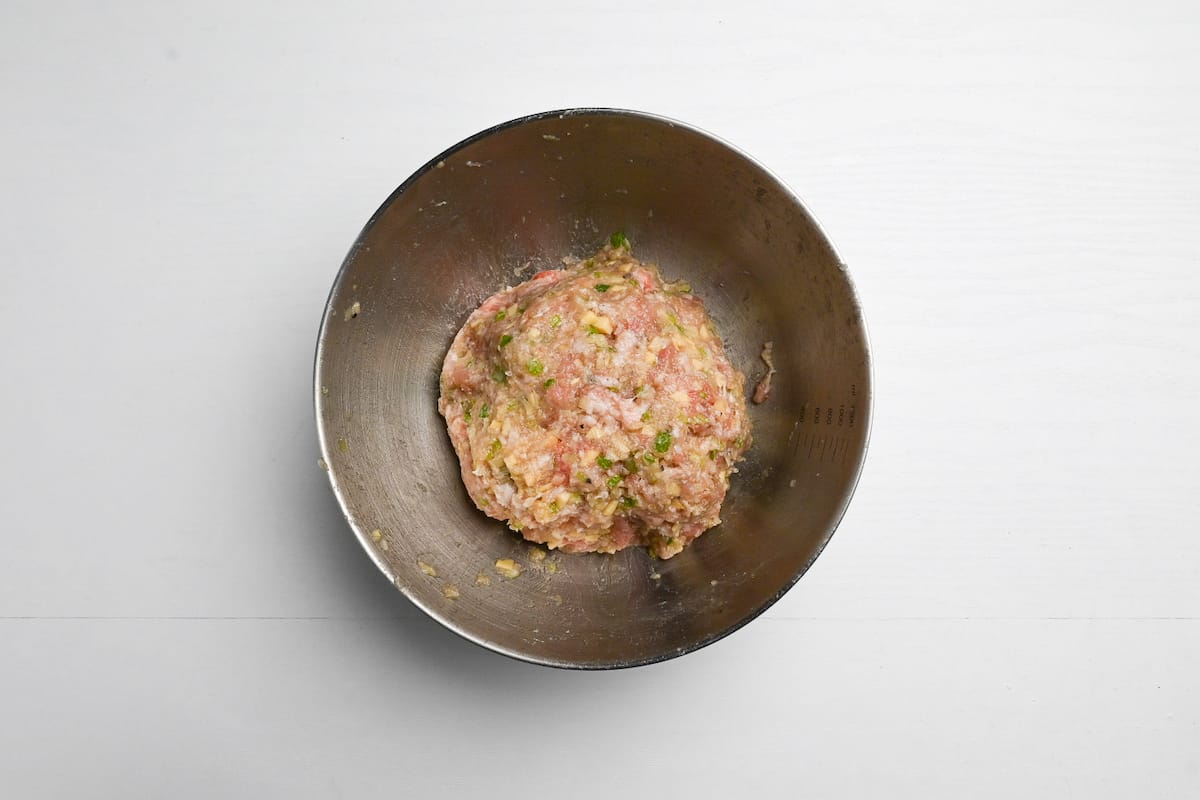
Combine the meat, grated onion and ginger, and potato starch-coated vegetables all into one bowl and knead them together by hand until the ingredients are evenly distributed throughout the filling.
Line the steaming basket with a sheet of baking paper for easy removal once the shumai is cooked. This will also prevent them from sticking or breaking!
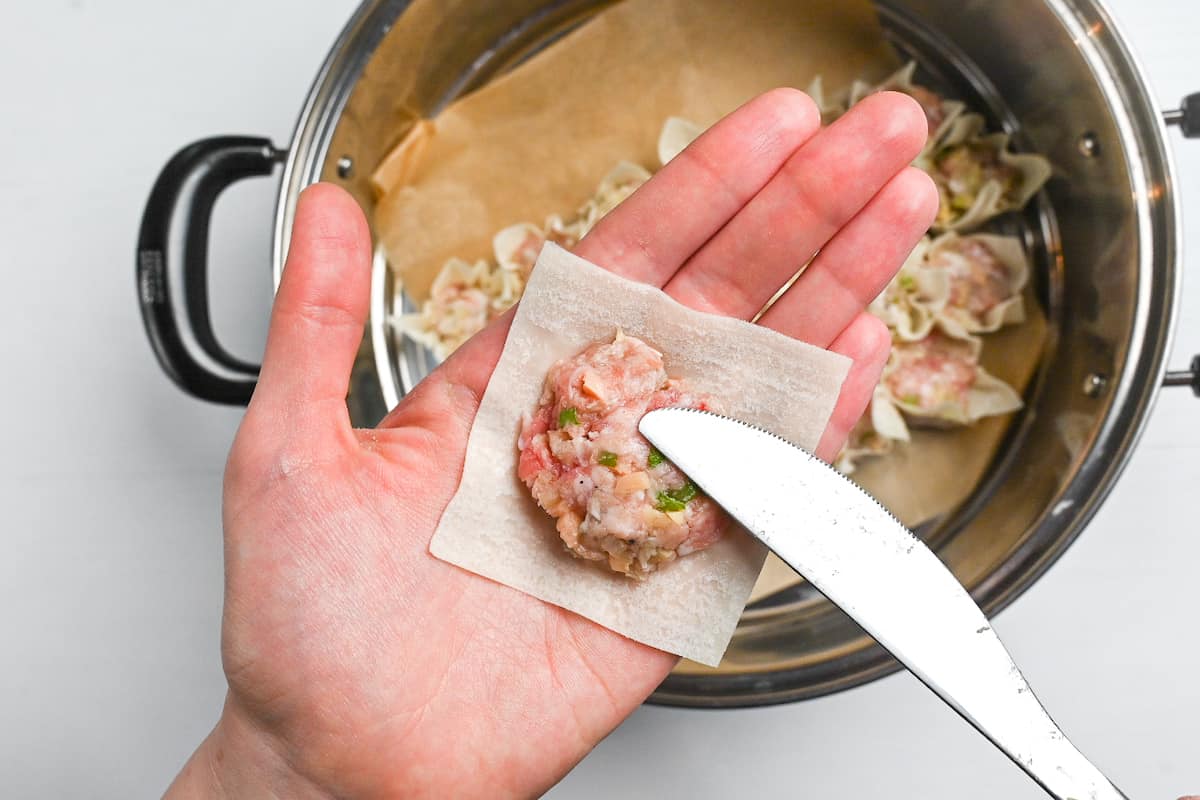
Take a wonton wrapper and place it in the palm of your hand. Use a cutlery knife to spread about 1 tbsp of filling in the center. (This is approximately 15g per shumai.) Leave some space around the edge with extra space in the corners.

Curl your thumb and fingers around the shumai to help guide the edges of the wrapper upwards.
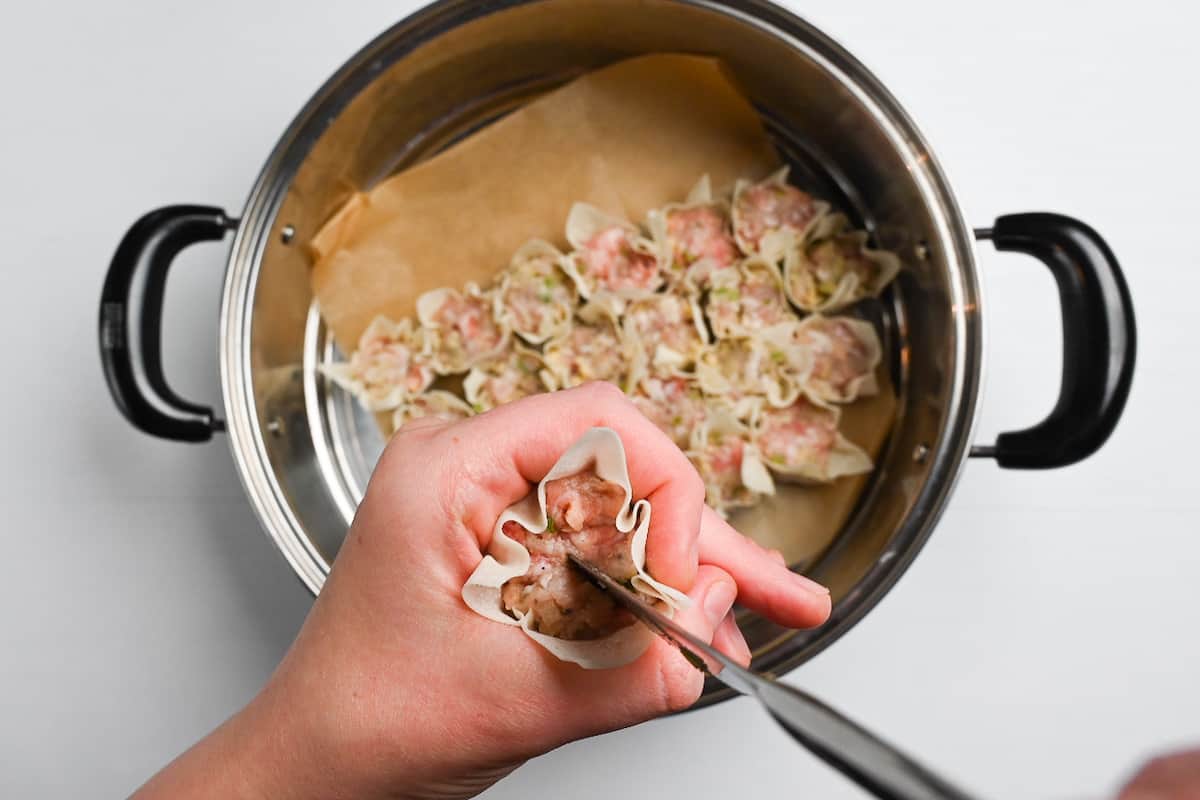
While your thumb and fingers are wrapped around the shumai, use the knife to push it down. Use your other hand to push the shumai up from underneath and flatten the base.
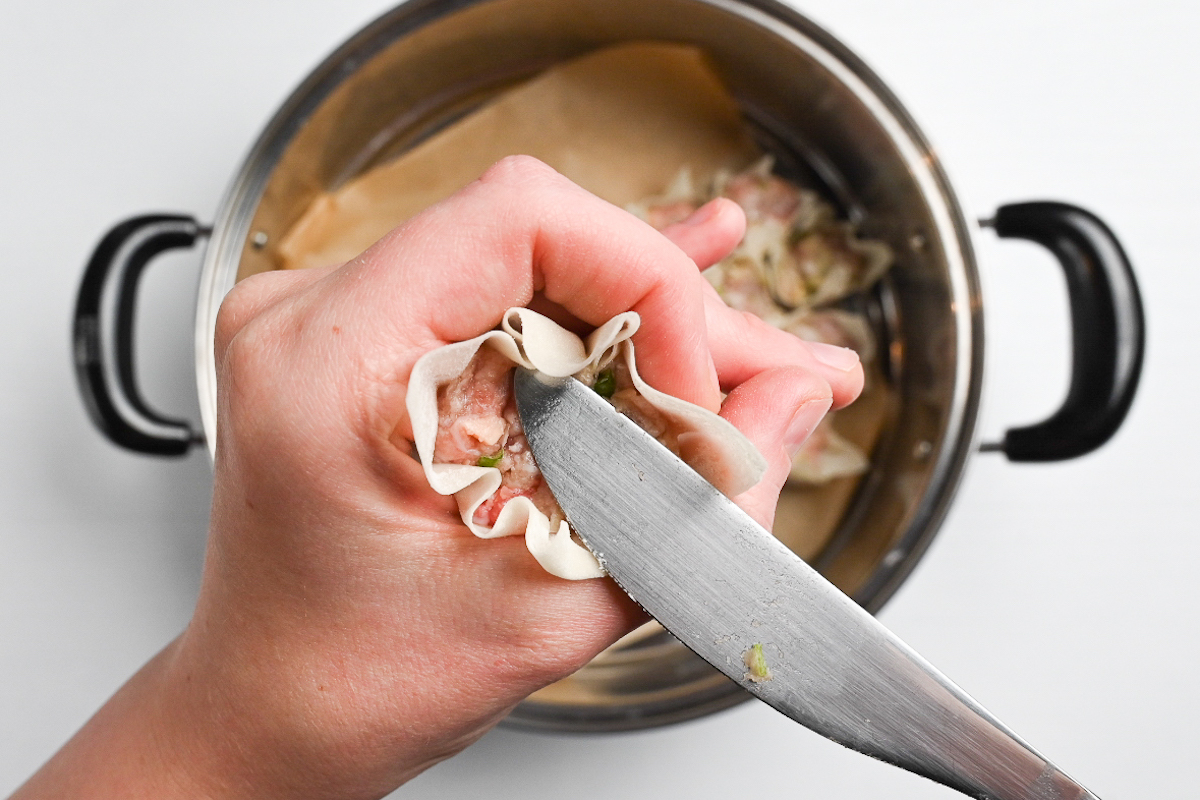
Smooth out the dent using the edge of the knife.
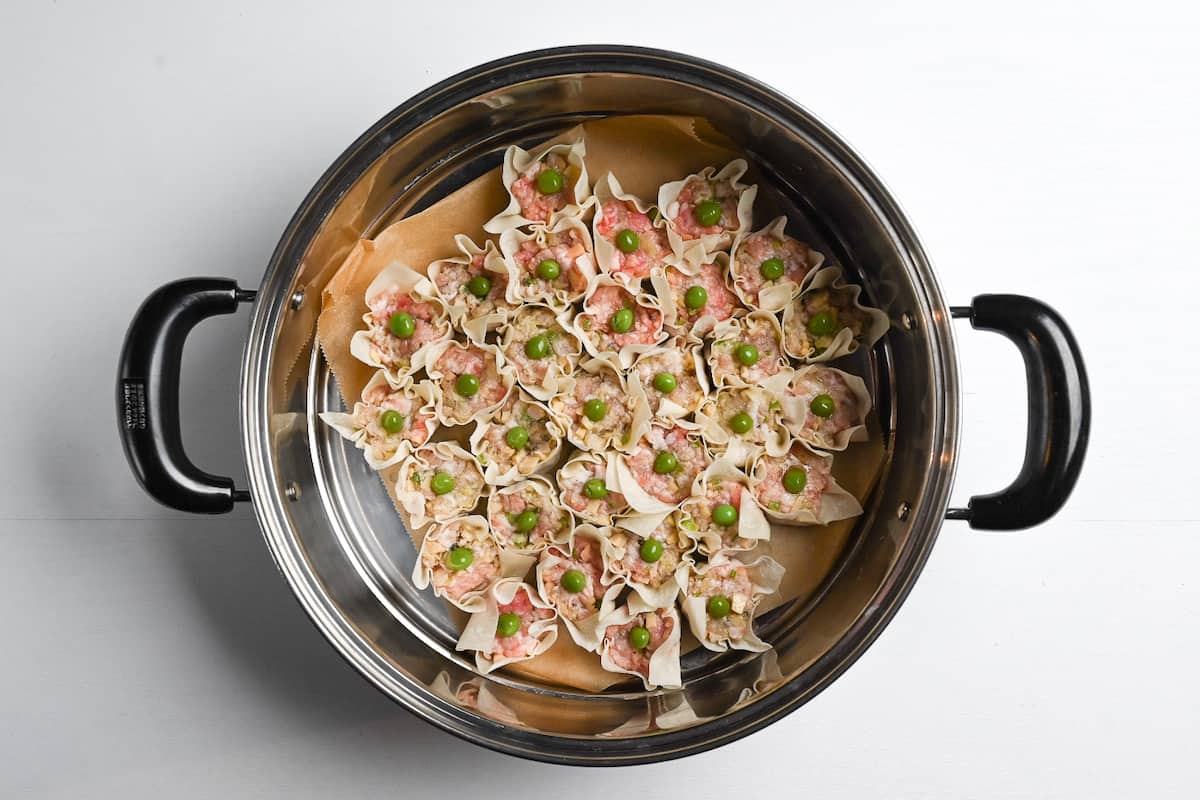
Place the completed shumai in a steaming basket lined with baking paper. Once they’re all shaped, place a green pea in the center of each one.
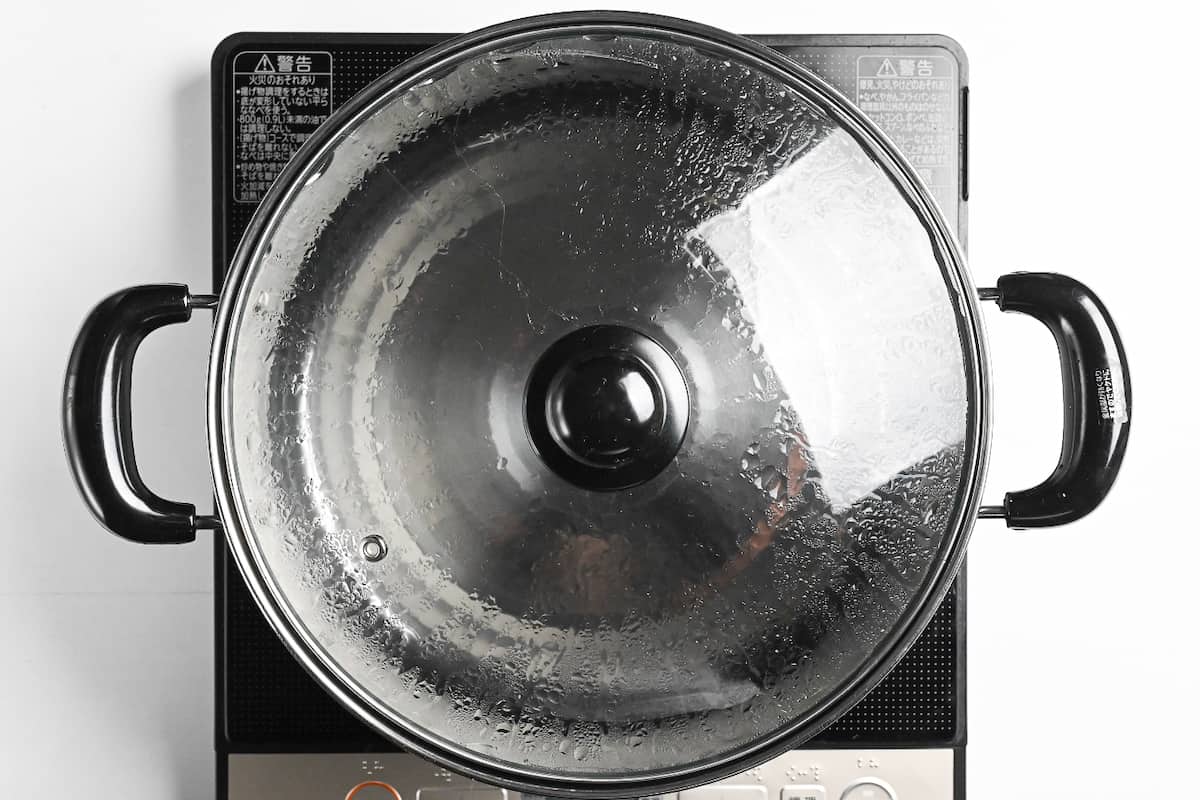
Bring your water to a rolling boil.
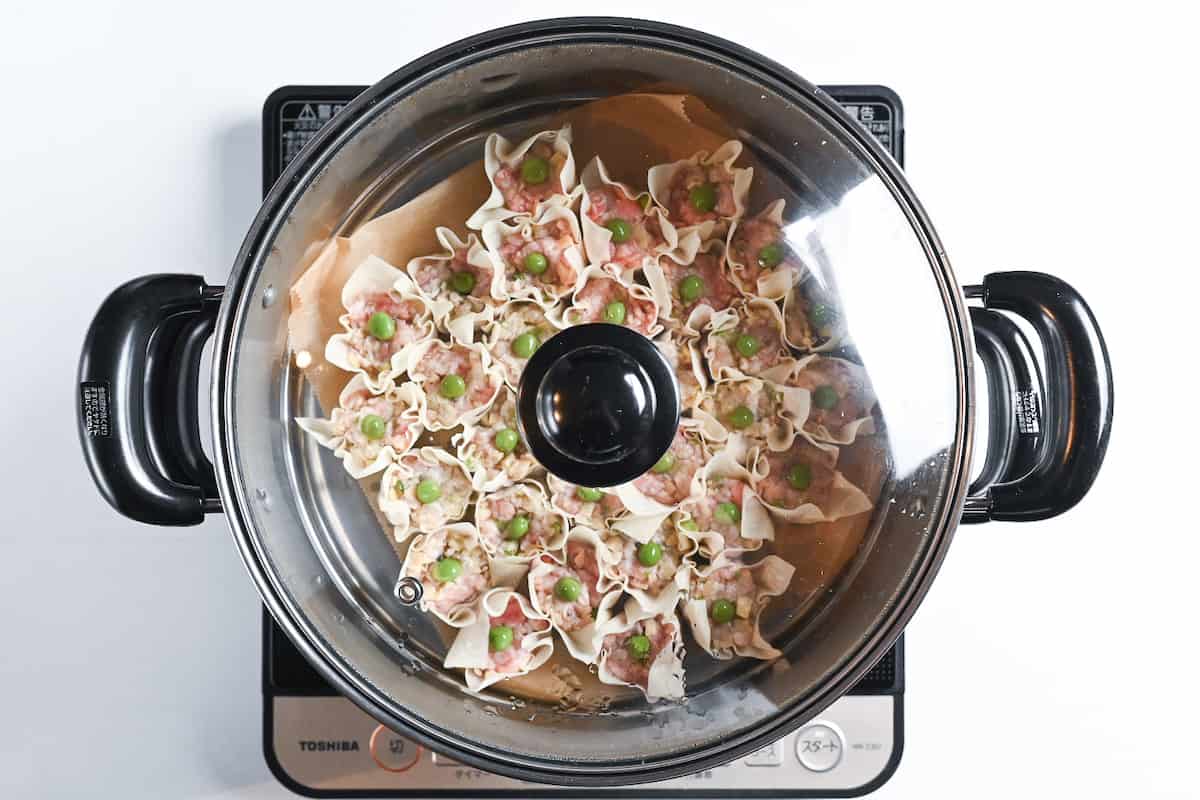
Once the water is boiling, place the steaming basket with a lid over the pot and steam the shumai for 8 minutes.
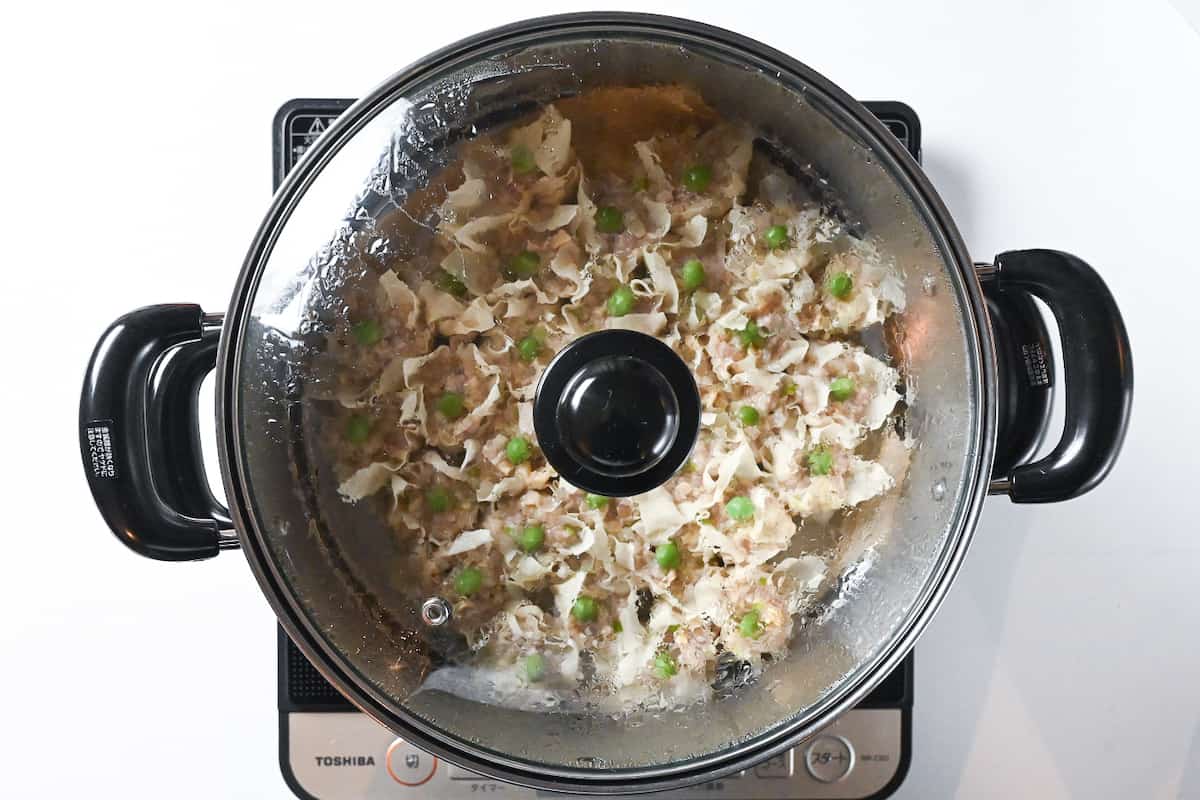
Remove the shumai from the heat and dish up!

I recommend dipping shumai with Japanese “karashi” mustard and soy sauce!
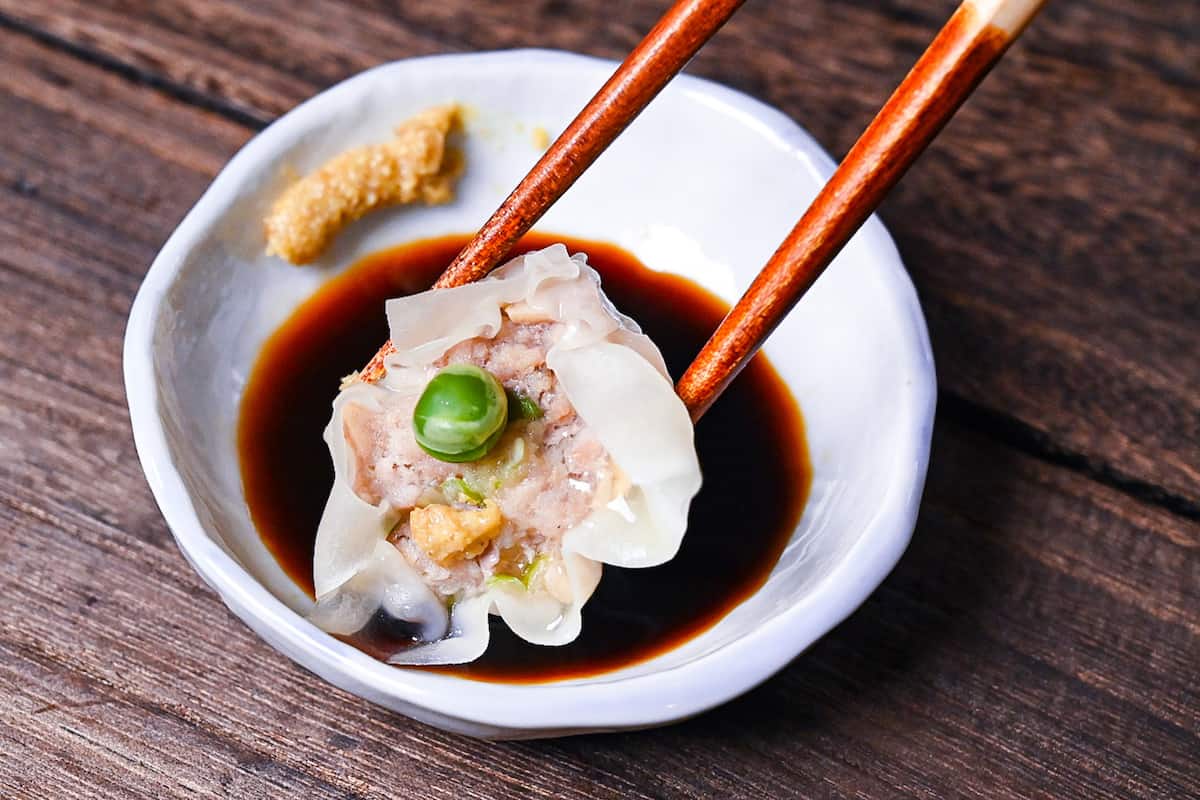
How to Store
For best results, cook the shumai before storing. While it is possible to make them ahead of time, the raw ingredients need to be kept refrigerated, and this can cause the dumpling wrappers to dry out. I recommend steaming them first, then refrigerating them in an airtight container for up to 1-2 days. You can reheat them in the microwave before serving.
Alternatively, steam the shumai and then freeze for up to 2 weeks. (The taste will start to deteriorate after 2 weeks.) To stop them from sticking together, freeze them on a tray with a little space between each shumai. After 2-3 hours you can transfer them to a ziplock bag or container.
Shumai can be reheated in the microwave or steam again until piping hot.
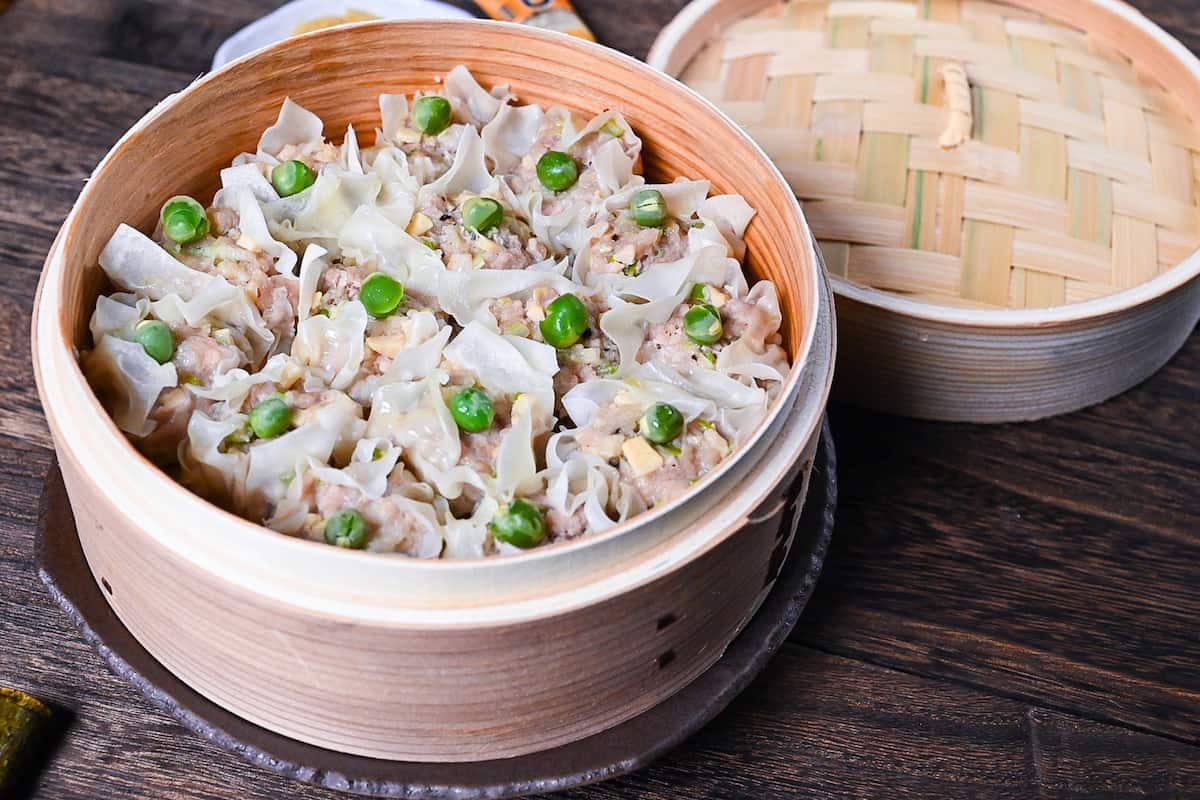
FAQ
As mentioned earlier, shumai is a dish that came to Japan from China. It is not a dish invented in Japan by a Chinese chef like ebi chili or ebi mayo, but rather a dish based on the original made using Japanese ingredients. In China, there are various kinds of shumai with different regional characteristics, whereas in Japan, it is predominantly made with pork or shrimp (or very occasionally with crab).
According to the Ministry of Agriculture, Forestry and Fisheries, Yokohama is recorded as the city with the highest consumption of shumai in Japan. This is largely due to the presence of shumai from “Kiyo-ken,” a well-known specialty restaurant based in Yokohama, and Yokohama’s Chinatown, the mecca of Chinese cuisine in the whole of Japan.
No definitive evidence tells us when exactly shumai was introduced to Japan, although some say it may have been around 1884. However, it was none other than the aforementioned Kiyo-ken restaurant that made shumai a well-known dish across the country. In order to spread the word of shumai, which was not yet popular or well-known, they set up shop in Yokohama Station. By selling shumai to customers traveling by train, the name and popularity spread, eventually becoming one of Japan’s most commonly eaten dumplings!
Later, the sale of shumai bento established the image of being “tasty even when cold,” and it quickly gained recognition from its use in “ekiben,” a lunch box sold in stations to eat on the train.
Shumai and gyoza are popular Chinese dishes in Japan. Gyoza uses ground pork, chives, cabbage, garlic, etc. while shumai uses ground pork, onions, green onions, etc. Gyoza is pan-fried, shumai is steamed. Gyoza uses round, thicker wrappers, while shumai has thin, square wonton wrappers. The thicker wrapper is to accommodate watery vegetables. Remember, the fillings are not interchangeable.
As mentioned above, shumai in Japan is predominantly steamed. However, some places either fry or deep fry shumai. Please note that this recipe is only optimized for steamed shumai.
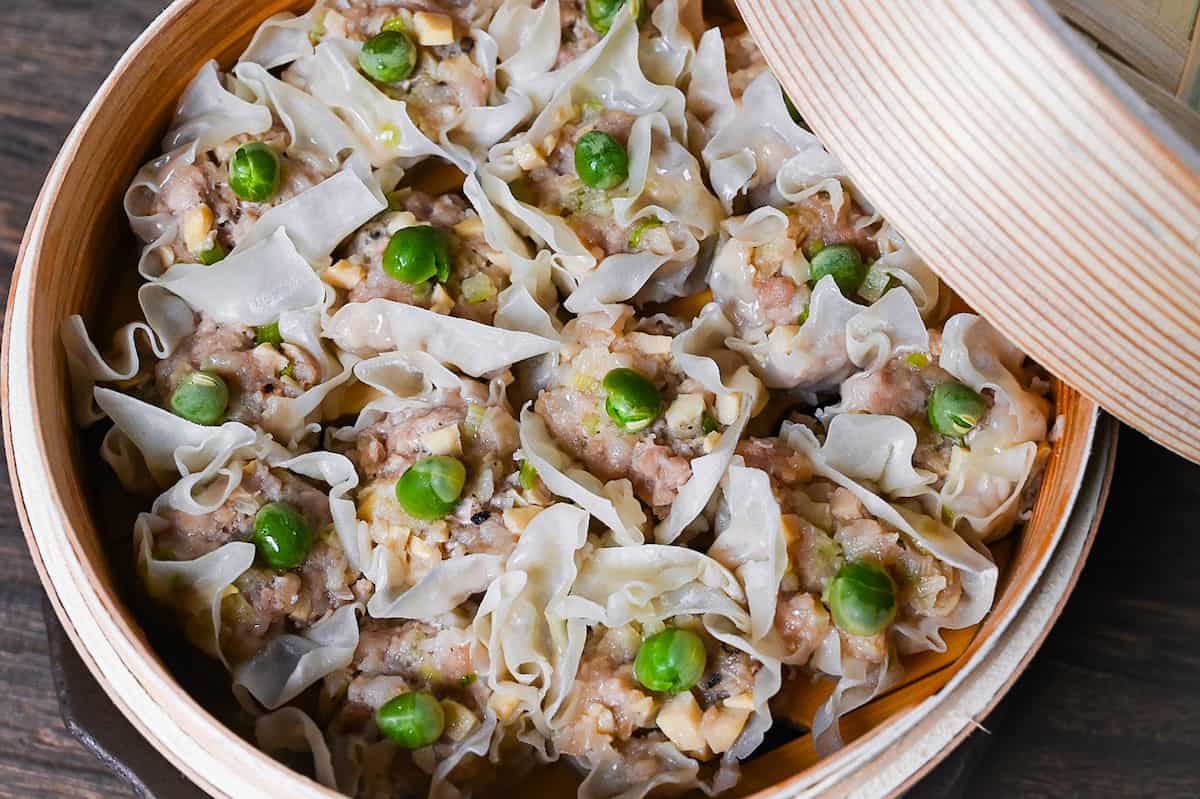
I hope you enjoy this Pork Shumai recipe! If you try it out, I’d really appreciate it if you could spare a moment to let me know what you thought by giving a review and star rating in the comments below. It’s also helpful to share any adjustments you made to the recipe with our other readers. Thank you!
More Chuka Recipes
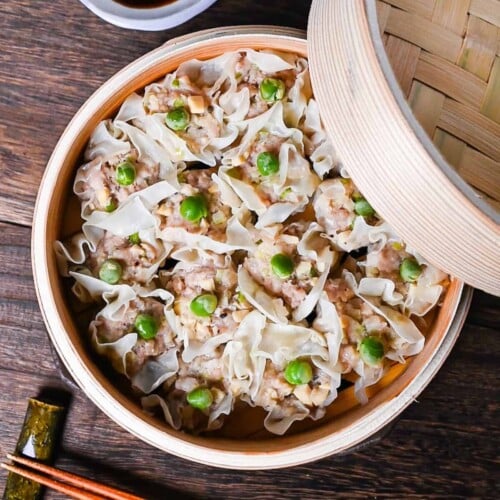
Pork shumai (Steamed Dumplings)
Ingredients
- 150 g thin sliced pork belly
- 150 g ground pork
- ½ tsp soy sauce
- ½ tsp oyster sauce
- 1 tsp toasted sesame oil
- 1 tsp sake
- ½ tbsp sugar
- ½ tsp salt
- 1 pinch ground black pepper
- 30 g Japanese leeks (naganegi) white part, finely diced
- 60 g boiled bamboo shoots finely diced
- 2 tbsp potato starch
- ¼ grated onion
- 5 g grated ginger root or ginger paste
- 30 square shumai/wonton wrappers
- 30 green peas
- soy sauce for dipping
- Japanese mustard (karashi) (karashi) optional
Instructions
- Finely dice 150 g thin sliced pork belly using a knife.

- Place the diced pork belly in a mixing bowl with 150 g ground pork, ½ tsp soy sauce, ½ tsp oyster sauce, 1 tsp sake, 1 tsp toasted sesame oil, ½ tbsp sugar, ½ tsp salt and 1 pinch ground black pepper. Knead together by hand until evenly distributed.

- In a separate bowl mix 30 g Japanese leeks (naganegi) and 60 g boiled bamboo shoots with 2 tbsp potato starch until evenly coated.

- Combine the two bowls into one and add the ¼ grated onion and 5 g grated ginger root. Knead together until the ingredients are evenly distributed through the filling.

- Start boiling a pot of water and line the steaming basket with a sheet of baking paper.

- Take a wonton wrapper and place it in the palm of your hand. Add about 1 tbsp of the filling to the centre (approx 15g per shumai) leaving space around the edge.

- Make a circle with your thumb and fingers and use a cutlery knife to push the shumai down into the circle, this will push the edges of the wrapper up and keep the dumpling round. You can also flatten the base by pushing it up slightly from underneath.

- Use the knife to smooth out the top and place it on top of the baking paper in the steaming basket. (See the post above for more process pictures.)

- Repeat until you've used up all the wrappers and filling, then place one green pea in the center of each shumai.

- Once your pot of water reaches a rolling boil, place the steaming basket on top with the lid.

- Steam the shumai for 8 minutes.

- Serve with Japanese mustard (karashi) and soy sauce.

- Enjoy!
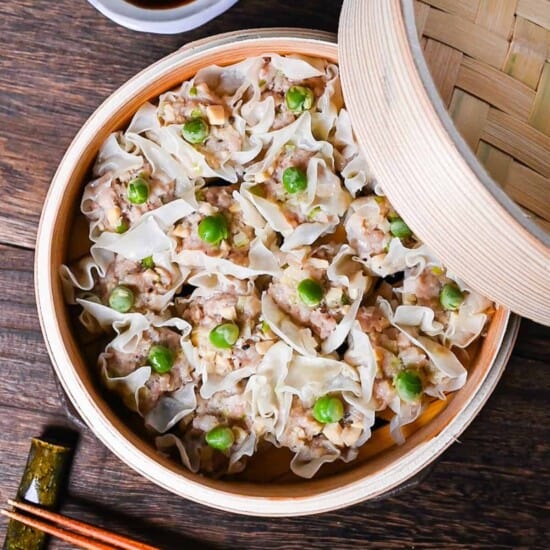


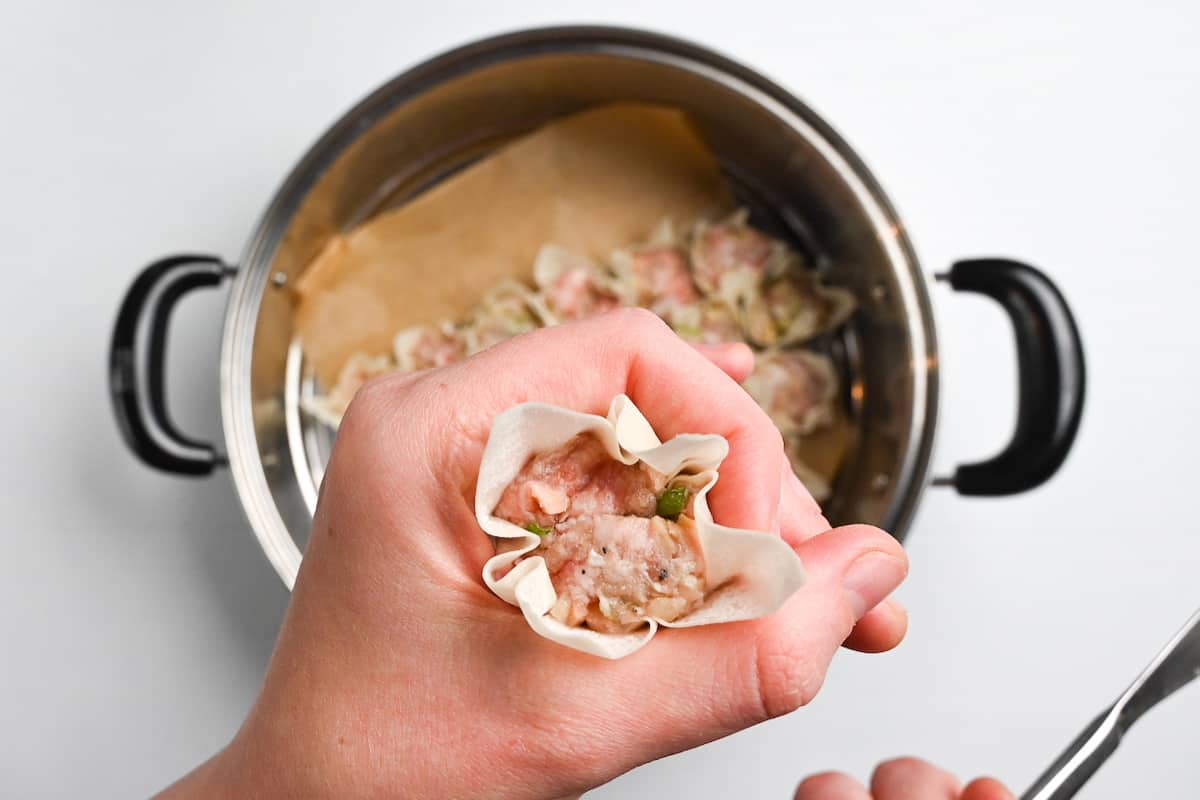
Leave a rating and a comment